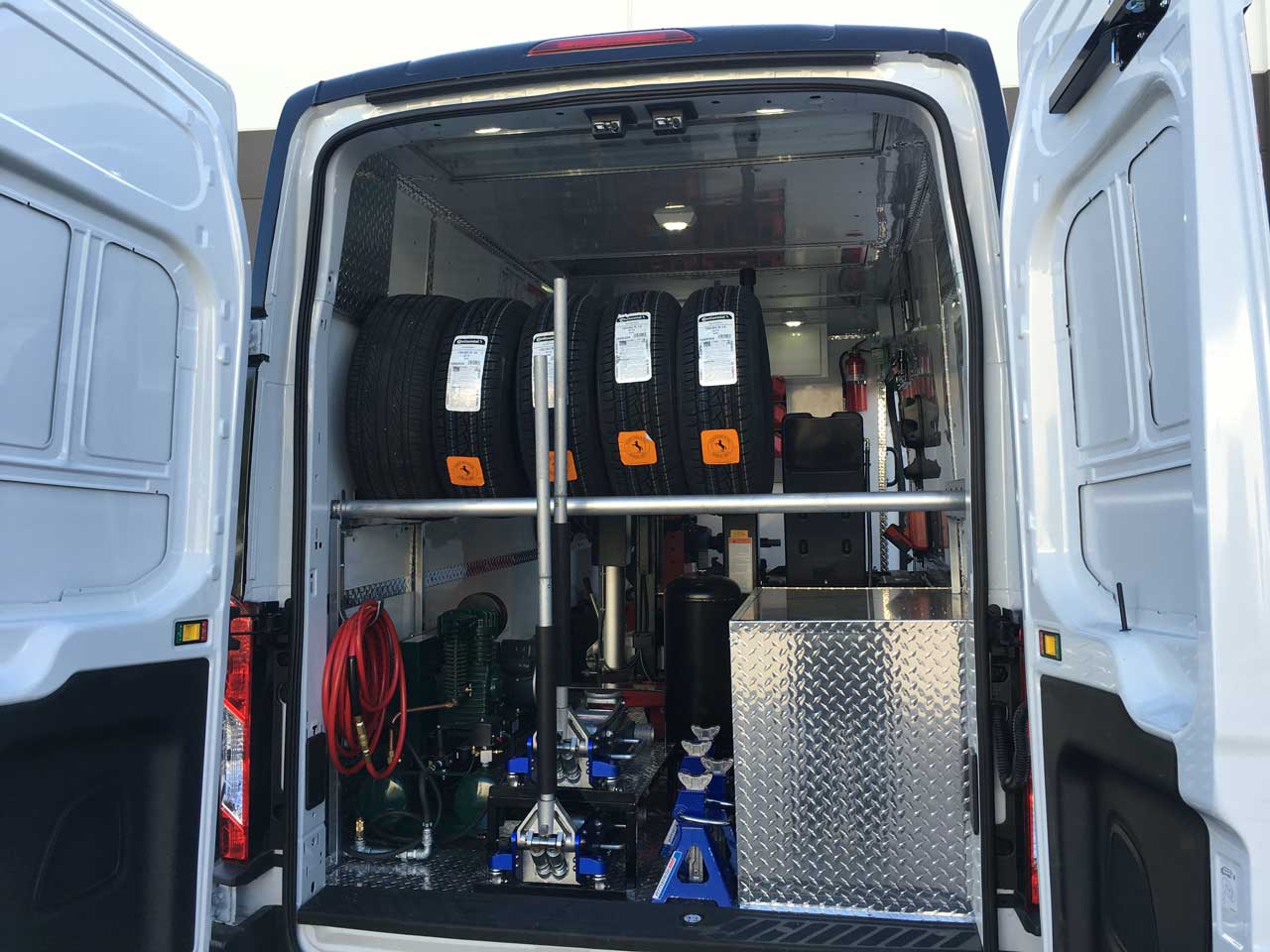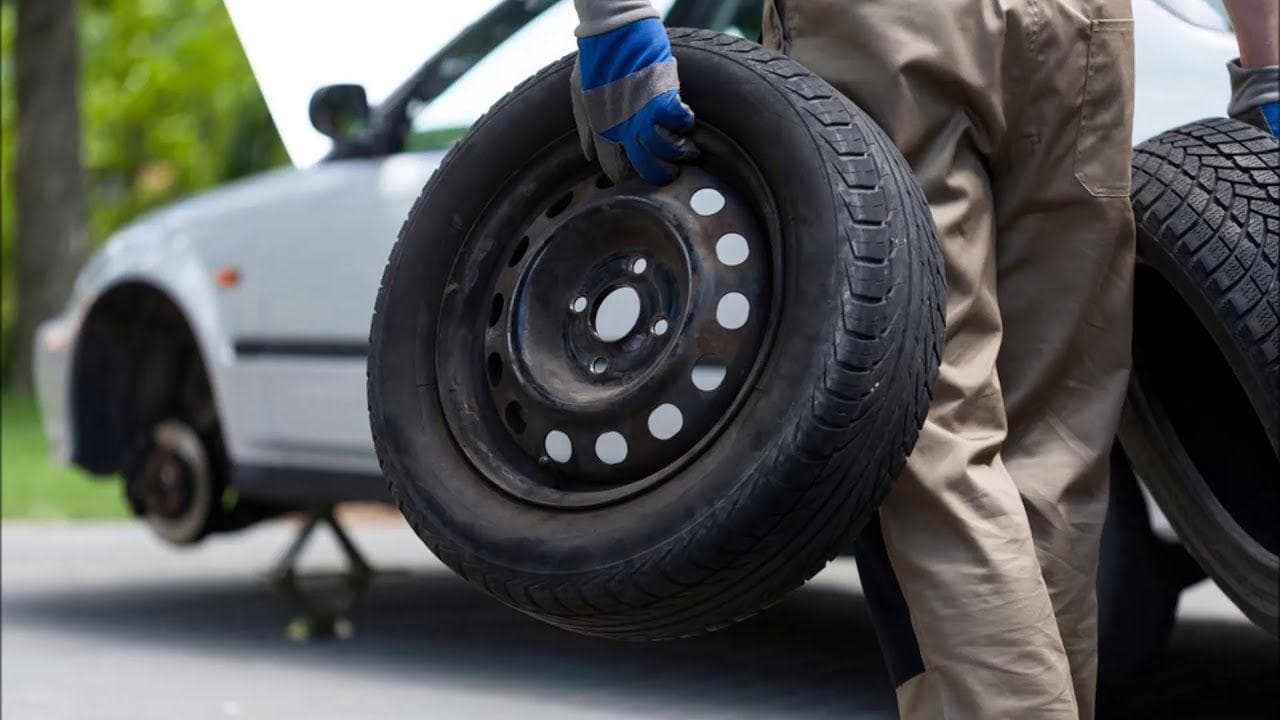Fast and Professional Mobile Tire Repair Las Vegas Providers
Fast and Professional Mobile Tire Repair Las Vegas Providers
Blog Article
Tire Solution: Proven Approaches for Ideal Tire Maintenance and Care
From guaranteeing appropriate tire pressure to routine rotation and placement, there are tried and tested techniques that can dramatically extend the life expectancy of your tires and boost overall driving experience. Allow's dig right into the world of tire service and uncover the keys to keeping your tires in excellent form for the lengthy haul - Mobile Tire Service Las Vegas.
Importance of Tire Stress
Correct tire stress is a critical factor in guaranteeing optimal car efficiency and security on the road. Maintaining the suggested tire stress degrees offered by the producer supplies various advantages. Sufficient tire pressure promotes far better gas performance, as under-inflated tires can lead to raised rolling resistance, creating the engine to function more difficult and eat more gas. Second of all, correct tire pressure ensures also walk wear, enhancing tire longevity and conserving cash in the long run by postponing the requirement for premature replacements. Additionally, correctly inflated tires contribute to improved handling and stopping capacities, vital for secure driving in various roadway conditions. Over-inflated tires, on the other hand, can cause lowered traction and a harsher ride. Conversely, under-inflated tires are vulnerable to overheating, which can bring about blowouts and accidents. On a regular basis readjusting and examining tire pressure, particularly soon trips, is a basic yet efficient way to enhance vehicle efficiency, expand tire life-span, and prioritize security on the road.
Tire Rotation Guidelines
When taking into consideration tire turning guidelines, it is vital to recognize the significance of this maintenance task in taking full advantage of tire life expectancy and preserving optimal vehicle performance. Tire turning includes transforming the position of each tire on a vehicle to ensure even step wear. Front tires often tend to put on quicker than rear tires due to steering forces, making normal rotation critical for well balanced wear patterns. The advised turning pattern varies depending upon whether a car is front-wheel, rear-wheel, all-wheel, or 4x4. Normally, tires ought to be turned every 5,000 to 7,500 miles, or as encouraged in the automobile manual. Overlooking tire turning can result in irregular wear, influencing handling, grip, and possibly compromising vehicle safety and security. By sticking to appropriate rotation standards, chauffeurs can expand the life of their tires, boost gas effectiveness, and improve overall driving experience. Regular turning is a basic yet effective upkeep technique that adds considerably to tire long life and automobile efficiency.

Benefits of Wheel Positioning
Making sure correct wheel positioning after tire turning is crucial for maintaining well balanced wear patterns and taking full advantage of car efficiency. Additionally, correct wheel placement helps to prolong the life-span of your tires. Misaligned wheels can cause uneven tire wear, leading to early tire replacement and enhanced maintenance prices.

Tire Tread Depth Examine
Doing a normal examination of tire tread deepness is necessary for preserving secure driving problems and extending the lifespan of your tires. Irregular step wear can indicate concerns with tire stress, positioning, or suspension, highlighting the importance of routine step deepness checks. By including tire walk depth checks into your regular maintenance timetable, you can drive with self-confidence knowing that your tires are in leading condition.
Seasonal Tire Inspection
Seasonal tire evaluation is an essential element of tire maintenance that ensures tires are prepared to deal with the challenges postured by various weather conditions. In prep work for winter a fantastic read months, it is necessary to examine the tire pressure consistently as chilly temperature levels can trigger tire stress to go down. By carrying out regular seasonal tire inspections, drivers can prolong tire life expectancy, improve gas efficiency, and most notably, ensure a safe and secure driving experience in differing climate problems.
Verdict
To conclude, preserving correct tire stress, rotating tires routinely, lining up wheels appropriately, keeping track of step deepness, and carrying out seasonal examinations are necessary techniques for optimal tire treatment. By following these shown techniques, drivers can guarantee their tires last much longer, do much better, and contribute to overall automobile safety. It is very important to prioritize tire maintenance to stop crashes, improve gas effectiveness, and prolong the life-span of tires.
Sufficient tire pressure advertises much better fuel performance, as under-inflated tires can lead to boosted rolling resistance, creating the engine to work more challenging and eat even more gas.When considering tire rotation standards, it is crucial to comprehend the value of this maintenance task in making best use of tire life expectancy and preserving optimal lorry efficiency. Seasonal tire examination is a fundamental element of tire maintenance go to the website that ensures tires are all set to encounter the challenges positioned by various weather condition conditions. By conducting regular seasonal tire assessments, vehicle drivers can extend tire life expectancy, improve fuel performance, and most significantly, ensure a safe driving experience in varying weather conditions.
In final thought, preserving appropriate tire pressure, turning tires regularly, lining up wheels appropriately, keeping an eye on walk depth, and conducting seasonal assessments are necessary practices for optimal tire treatment.
Report this page